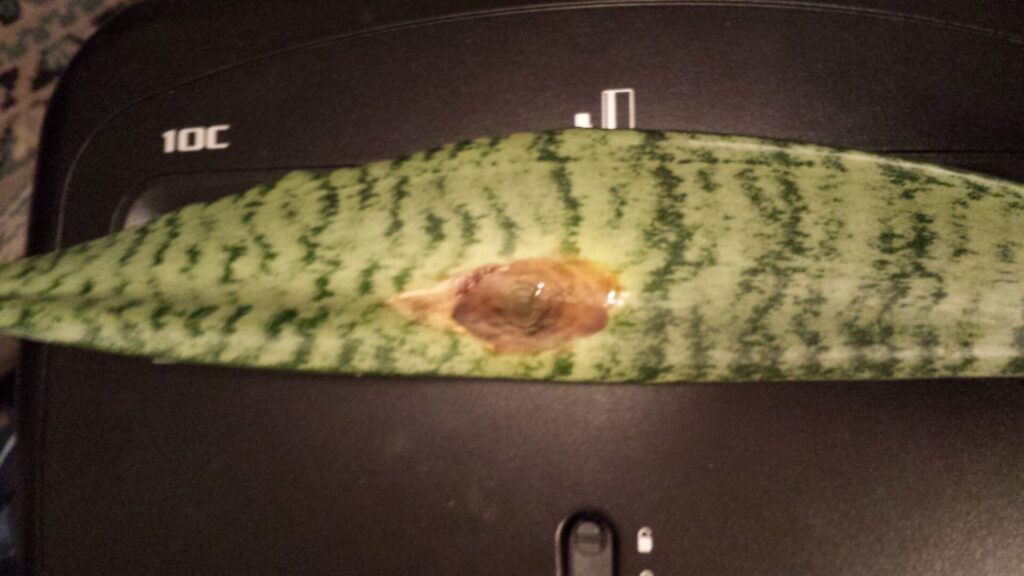
Hello There, help me save my snake plant. I bought it 2 months ago and brought it to a store to get a bigger vase. (it was bursting) A month latter I’m getting these brown spots that ooze a sticky liquid (not much) I watered the plant only after 4 weeks of being transplanted. I was told to cut off the leaves with the brown spots and I cut off 2 so far. Now I’m seeing some small spots forming in other leaves. I use a grow light off and on it as I live in a basement and don’t get too much light, I put the plant near the window. Kindly help me. (Heskyklioth1@gmail.com)
There are over 70 species of snake plant, the most common is often known as mother-in-law’s tongue. Dracaena trifasciata (previously Sansevieria trifasciata) is a very sturdy succulent. It is meant to be up there with the easiest and most forgiving of houseplants. It likes low, indirect, light, it is pest resistant, and if you forget to water it for weeks, it does not seem to mind.
The only way to kill a Dracaena trifasciata, is seems, is by overwatering it; the roots can rot. So let the soil dry out before watering again, and it is preferable to water it from below to encourage root growth. Water the plant even less often in fall and winter. Despite holding off for 4 weeks after transplanting, overwatering is still probably the underlying reason for your browning leaves.
May I suggest smelling the soil? If it smells sour/rotten, that suggests that the soil does not have enough air. Repot your plant (again), ideally in a terracotta (rather than a plastic) pot, with good drainage. Get rid of all the old soil and repot the plant with very well-draining soil – or soilless soil. You could use a cactus-mix. Avoid wetting the heart of the plant when watering. Do not fertilize your snake plant; there is no need to do so.
Transplanting is easy and is explained well here.
It seems that you could have let the plant be root-bound since that encourages it to flower. I have never seen a snake-plant flower, but it seems that the plants that are grown outdoors where they are exposed to changes in light, can occasionally produce fragrant, tubular, greenish-white flower clusters that appear on tall spikes and resemble lilies.
Interestingly, you are advised not to cut off the leaves that have turned brown, but that may be just if the browning is at the tip of the leaves (not your situation). The plant grows quickly, and soon new leaves will hide the leaves with the brown tips.
Another totally different diagnosis is that you have Snake plant red leaf spot disease. This fungal infection, caused by the fungus drechslera ersipila, causes the appearance of red to reddish-brown spots and irregular patches. The spots usually start off small, but over time, they can spread across the entire leaf surface. Sometimes, the spots turn into dark brown blotches. In severe cases, the infected areas can even fall off. However, there are often spots of liquid at the center of these blisters, and the surrounding flesh of the leaf may look like it is beginning to rot.
This diagnosis may be appropriate since you have said there is an oozing sticky liquid. Just in case, please take a look at the description on this website. If you think you have the fungus, then remove the leaves and do not compost them. Importantly, please ignore the recommendation for using fungicide which is illegal in Toronto.
I wish you luck in retrieving the health of your snake plant.

